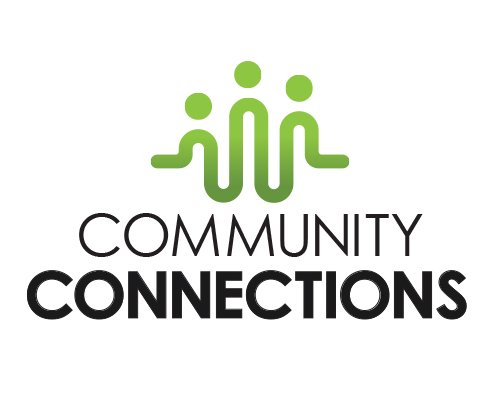

When you own it and you love it, you just do it.-- Bob Dema
Growing up as an Army brat gave Bob Dema his first goal in life. Born in Fort Devens, Mass., in 1944, making friends and keeping them were difficult when traveling from school to school. “I decided that when I had kids, we were going to stay in one place.”
Dema and his wife Carol relocated back to Great Bend to be near family during the COVID lockdown in 2020.
Their grandsons are a main focus, traveling to sporting events involving basketball, baseball and tae kwon do.
But the entrepreneurial spirit still has Dema eyeing current events in the downtown business district. “I’m doing a lot of watching,” he said.
Background
Dema came to Kansas in the 1960s, graduating from Lawrence High School in 1963. He married Carol, his high school sweetheart, in 1966 and then graduated from Kansas University with a degree in business accounting.
After being accepted into the KU master’s program, he joined the Army Reserve when he was called up to serve in the Vietnam War. His first job was as an accountant at Peat, Marwick and Mitchell in Kansas City.
The move to Great Bend
Dema’s first job in Great Bend was with Miner, Adams and Folkerts.
“Great Bend was poppin’ back then,” he said. “We got up to about 25,000 people, with oil being strong. It was going pretty good.”
After his daughter Julie was born in 1971, “we did some consulting for Thies Packing and J.M. Thies approached me about going to work for them as vice-president of finance,” he said.
When the company sold, he moved his family to the Lawrence area, but then another phone call brought him back to Great Bend to Doonan’s for its trailer operation.
In 1975, the year his daughter Jill was born, he embarked on the project that would lead to the largest focused retirement plan company in the country.
Dema’s previous experience working with the Employee Retirement Income Act (ERISA) while working as an accountant in the Kansas City area afforded the opportunity to educate workers in the Great Bend and surrounding area, he said.
The growth of CPI
Dema began CPI Qualified Plan Consultants Inc. in 1972 as a third-party administrator for qualified employee retirement plans. The operation began small, with just three employees.
“Working with pensions is when we started taking off,” he said. “I started in sales and creating pension plans. We did a lot of work in western Kansas: Liberal, Garden City and Dodge City. We started expanding. When it was all said and done, we had about 22 regional offices and about 500 employees nationwide.”
He became active in the legal side of the business, working with the American Institute of Public Accountants on their Employee Benefits Taxation Committee along with the first national pension plan conference.
He was also active in the American Society of Pension Actuaries.
With the creation of Employee Stock Ownership Plans (ESOPs) “we wound up being the largest provider of ESOP administration.”
That led to more committee memberships and conventions.
The company was sold and then repurchased with the help of employees and local investment.
CPI was eventually sold to CUNA Mutual Group in 2009.
Internally, the business was always focused on its employees, Dema said.
“Our focus was always hiring people because we were growing pretty fast,” he said. “We did a circuit every year of about 20-some universities to hire people. We had a pretty extensive two-year training program.”
As the company grew, Dema became more aware of things his employees needed.
The Great Flood of 1981
About 20 inches of rain in 12 hours caused the Dry Walnut Creek to flood the Great Bend community in June 1981.
The flood reopened debate of flood control in the community.
Armed with a desire for petitioned approval and a notebook about the flood and its aftermath titled “Save Our City,” Dema traveled to Washington, D.C., to meet with the state’s leaders in Congress. It took about 10 years and another flood to get the flood control project completed.
Community Development
Heading into the next century saw Dema service on organizations and committees, such as the Great Bend Chamber, United Way of Central Kansas, the Golden Belt Foundation as a founding donor and the Central Kansas Medical Center Board of Directors. There were also “bootstrap projects,” he said.
The MyTown project in Great Bend began as a quality of life issue, Dema said.
“At first, we were looking at finding franchise operations willing to locate in town,” he said. “They would have things that people would need and want.
“But one of the biggest hangups was that our population wasn’t big enough. So we went to managing operations, building operations, placing people in management with the idea that they would become owner-operators.
“A small business can’t survive unless it’s owner-operated. We had to get things started, and then evolve them to owner-operators. When you own it, you love it, you just do it,” he said.
“I think the Finally Friday thing we’ve got going downtown on Forest Street brings what it takes,” he said. “First, you have to have leadership and passion to want to push things into action. This group has the energy, the passion, they’re putting it into action.
“I think we’re going in the right direction,” Dema noted. “The challenge then, is, to find the next generation that is going to step into it. It does take a while for that stuff to germinate.”
Community Connections is a regular feature of the Great Bend Tribune. We welcome readers to submit names of individuals who are active in the community that they would like to see featured in a future story. Send suggestions to news@gbtribune.com and explain their “community connections.”





